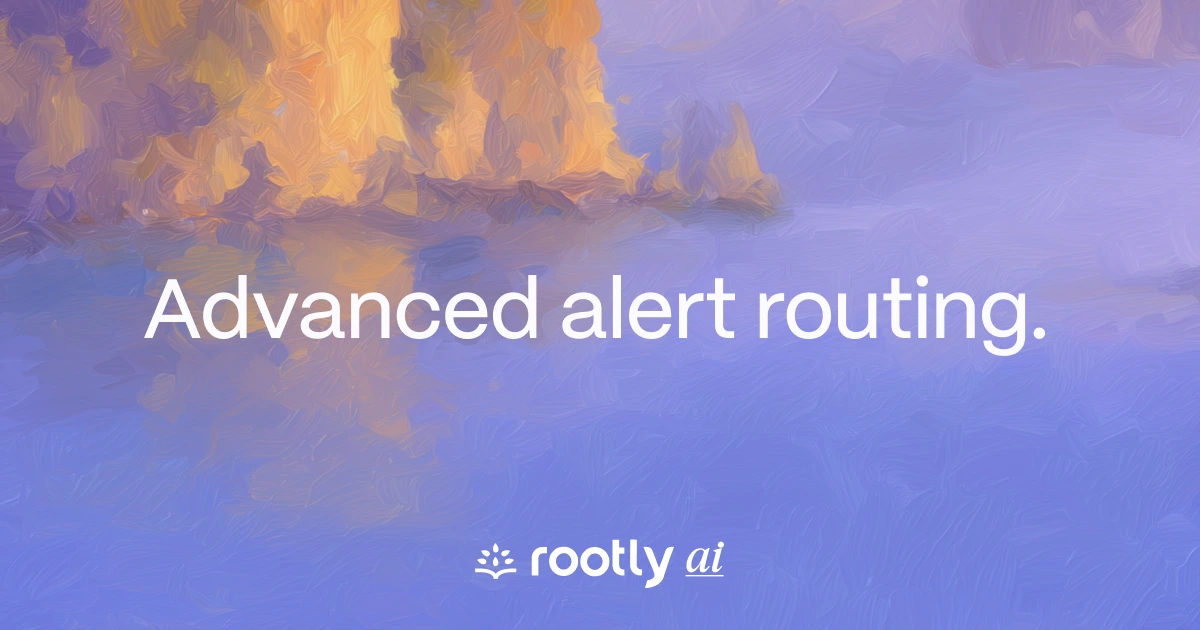Advanced Alert Routing gives you fine-grained control over how alerts are distributed across teams, services, and escalation policies—all at scale and with minimal setup. Whether your organization has multiple escalation policies per team, shared services, or complex on-call rotations, Rootly handles alert routing with precision and transparency.
Why it matters
When operating at scale, determining who actually gets paged can get messy—especially when teams manage multiple escalation policies or shared services. Advanced Alert Routing ensures alerts always reach the correct responders by:
- Automating routing logic based on teams, services, or escalation policies.
- Supporting cross-functional paging for shared ownership scenarios.
- Providing a birds-eye view of all routing logic across your organization, so you can audit and adjust without guesswork.
How it works
Rootly determines how incoming alerts are routed through two primary paths: either directly from your monitoring tools, where alerts are configured to target specific teams or services, or through Alert Routes within Rootly, where you can define flexible logic to automatically route alerts to the right teams, services, or escalation policies based on matching rules.
When a team is selected as the destination:
- If the team owns multiple escalation policies, Rootly will evaluate and route alerts to all associated escalation policies. Each policy’s current on-call schedule is used to determine who is paged.
- Only active on-call members from those schedules are paged—not every team member. For example, if Team A has 10 members but only 5 are currently on rotation, Rootly pages only those 5 active responders.
- This ensures the alert reaches the right people without over-paging or creating noise.
When a service is selected, Rootly checks which teams or escalation policies are mapped to that service and routes accordingly, applying the same logic above.
.png)
Key use cases
- Generic team routing: Automatically route alerts containing a team name to that team’s current on-call responders.
- Cross-functional paging: Page multiple teams (e.g., SRE + App) simultaneously when a shared service is impacted.
- Routing visibility: Get a visual map of how alerts flow across your teams and policies for quick troubleshooting and governance.
Check out the Alert routing documentation to learn more.
.avif)






















